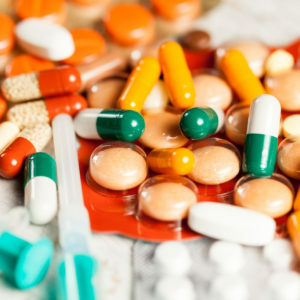Leave it to Washington to make a federal project out of something that can be safely and easily thrown in the trash or handled in other ways.
At issue are billions of unused, no longer medically needed prescription opioid pills, which remain susceptible to misuse.
More than 1 million Americans have died of a drug overdose since 1999, including 80,411 from opioids alone in 2021. The over-availability of opioids has been integral to this crisis.
When a patient no longer needs prescribed opioids for severe pain relief, the unused pills are a lurking danger that can lead to drug abuse by the patient or, worse, children and others in the home.
To help save lives and prevent addictions, it is crucial to destroy and dispose of unused, no-longer-needed opioids immediately.
Fortunately, in the last five years, numerous programs have facilitated this.
These include widespread take-back programs at pharmacies, police stations and other venues. Another option is commercially available in-home disposal kits that are inexpensive and easy to use.
Many government agencies offer clear and simple instructions so that opioids can easily be turned into junk at home by combining them with kitty litter, coffee grinds and other unpalatable pollutants and then thrown into the trash. Opioids, though, should not be crushed.
According to the Centers for Disease Control and Prevention, there were 142 million prescriptions for opioids dispensed in 2020. On September 12, during a court trial, the Associated Press reported that the Drug and Enforcement Administration disclosed “that in 2019, 8.8 billion dosage units — pills, patches and lollipops — were shipped for 12 common opioids.”
Even today, there are a lot of excess pills prescribed. On June 26, after an assessment of numerous studies, the Food and Drug Administration said “most studies reported that 50 to 70 percent of tablets went unused.”
Yet, federal health officials, particularly the FDA, have squandered mainly an opportunity to aggressively promote a public health campaign about the continued dangers of unused opioids and the many ways to get rid of them safely and quickly. Fortunately, communities and others picked up the slack.
The FDA has also become primarily focused on a new way to dispose of these narcotics: through the U.S. mail. Yes, the U.S. mail, the theft of which is today at unprecedented heights.
Since April 2022, the FDA has been fielding comments and developing a program by which the U.S. Postal Service is envisioned to be widely used for patients to mail unused opioids back to drug manufacturers. This would be the case even though many of the same pharmacies providing a pre-paid envelope also have take-back programs.
The FDA’s strong emphasis on promoting a mail-back program since 2022, which it aims to start in 2024, may already have the unintended consequence of cannibalizing other successful disposal efforts and stymying their growth.
Fourteen attorneys general expressed strong concerns about this in a June 21 letter to the FDA.
“It is critical the FDA reconsider its unproven one-size-fits-all mail-back proposal and instead choose to promote and educate Americans on all available in-home disposal options,” they said.
The other concerns raised were “the insecurity of mailboxes and inconvenience for many rural Americans. A critical component of providing any in-home disposal option is providing a solution that will immediately rid the home of the medication in question.”
Against this backdrop, there appears to be hopeful news: significantly more Americans are responsibly disposing of unused opioids now than five years ago when such programs started.
In 2022, a study in the medical journal Cureus found that 94 percent of patients receiving opioid prescriptions reported having leftover, unused opioids. Sixty-nine percent claimed to dispose of their prescription opioids, while 31 percent did not.
Whatever course the FDA decides, communities, state governments, pharmacies and others should continue and accelerate their take-back and public education destruction programs.
And if you have unused opioids at home, plan to get rid of them — within the next 24 hours.

